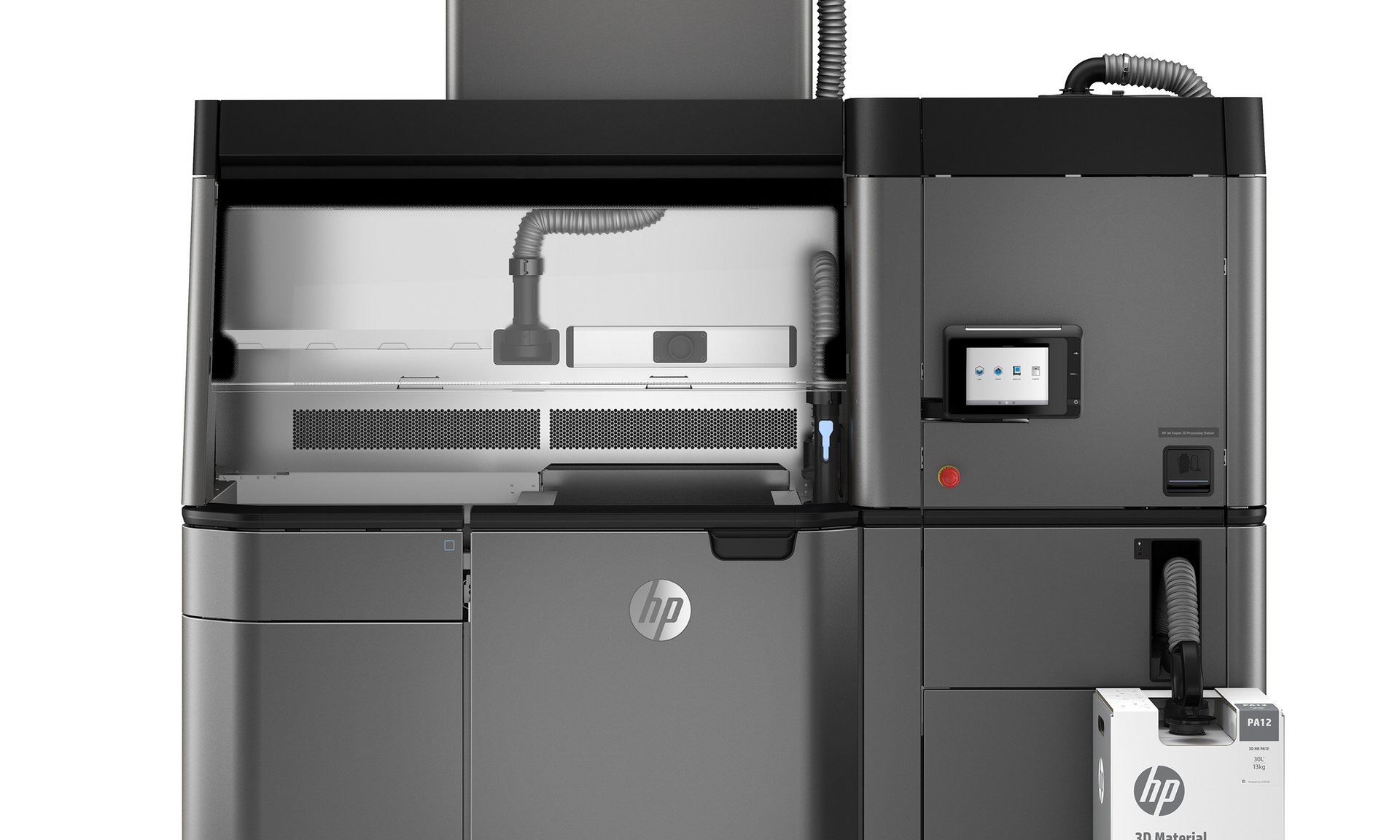
This week HP announced several things related to their 3D print strategy, but adding them up reveals they are quite serious about the technology.
As readers may know, HP announced a new form of 3D printing technology a couple of years ago, and there was a bit of a delay before it was finally released last year in the form of equipment and materials.
These initial machines were installed at selected organizations where, presumably, they would have had quite a workout. From this experience HP could refine the equipment and software as necessary. Now they seem to be taking a much bigger step.
Their announcement is simply four things:
- They’ve established a reseller program in North America and Europe to market the machines, materials and services
- They’ve installed HP 3D printing gear in nine major 3D print service bureaus
- They are opening a dozen 3D “experience centers” in various locations in the US and Europe
- A new chemical partner joined their open materials program to work with HP directly developing new materials for the equipment
Each of those individually is not that big a deal, but together they say something about HP’s intentions: they are going very big with this product line.
For their reseller program, 80% of the 30 participants they’ve attracted are surprisingly NOT part of any existing HP reselling program. This is notable, as one would think that HP would want to leverage their existing – and massive – resales network for a new product.
But this is what I think happened: During their ill-fated foray into 3D printing by rebranding Stratasys gear years ago they attempted to market 3D printers themselves, which made sense because they weren’t making the machines. I believe they discovered that they really didn’t know much about the 3D printing market – and that was proven because they dropped out even though they had a very popular machine on their hands at the time: a relabeled Stratasys uPrint.
Now their reseller strategy makes sense: their existing network does not understand 3D printing and therefore they need a new network, drawn from those who actually understand the technology, the players and the process. The resales network is smaller, but it is far more powerful.
To aid the resellers the network of experience centers should enable direct, first hand understanding of the equipment, how it is used, and the quality of the resulting printed parts.
The growth of their open materials project is also supportive, and eventually should enable them to access more clients by providing unique material options.
These marketing steps are, together, more significant than perhaps any other 3D printer vendor. Yes, there are some who have a demonstration center, but not a DOZEN of them. And HP could open even more. This is the power of their financial backing.
Why are they taking these huge steps? It’s because of the size of the market. HP believes the market for 3D printing will reach USD$18B in 2021, certainly a large number. However, HP believes it is small!
Why? Because they are really looking at the USD$12T (that’s a “T”, not a “B”) manufacturing market.
They feel that their process could eventually evolve into a form that is vastly more usable in the production manufacturing space, by reducing the cost & selection of materials, increasing reliability and taking advantage of 3D design.
They may be right.

